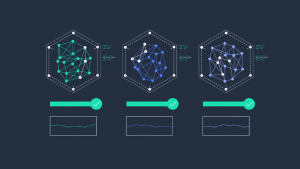How to deliver on the promise of Cloud, Big Data, analytics and engagement | #IBMEdge
![]() Creating an agile infrastructure is the key to optimizing Cloud, Big Data, analytics, mobile and social to create composable business services and drive real-time decision-making to obtain new levels of customer engagement. At IBM Edge last month, the day one general session reviewed the subject of why infrastructure matters. Continuing on this topic, day two focused on how to deliver on the promise of Cloud, Big Data, analytics, mobile and social, empowered with infrastructure solutions.
Creating an agile infrastructure is the key to optimizing Cloud, Big Data, analytics, mobile and social to create composable business services and drive real-time decision-making to obtain new levels of customer engagement. At IBM Edge last month, the day one general session reviewed the subject of why infrastructure matters. Continuing on this topic, day two focused on how to deliver on the promise of Cloud, Big Data, analytics, mobile and social, empowered with infrastructure solutions.
Keynote speakers for this session included Chris O’Connor, VP of IBM Cloud and Smarter Infrastructure Strategy and Development, Avrind Krishna, GM of Development and Manufacturing for IBM Systems & Technology and Maria Winans, VP of Worldwide Industry Cloud Solutions & Social Business Category Marketing for IBM Software Group.
Cloud-enabled and Cloud-first
O’Connor said that IT leaders have a huge opportunity to bring together the Cloud-enabled world with the Cloud-first world. When you Cloud-enable your systems of record, you construct services, access and speed out of it so that the information can now be used in new and flexible ways. The Cloud-first world environment consists of people who are imagining and making those flexible methods a reality. They’re developing on the web without any infrastructure, but they can only go so far because they have to connect to the data and information of everything that exists in the Cloud-enabled world.
IT practitioners turn to infrastructure to figure out the balance of bringing the Cloud-enabled world together with the Cloud-first world, seamlessly extending the enterprise from what they own to what they need. Bringing these together also means combining infrastructure and software that allows the dynamic organization and union of what’s owned and what’s needed in that environment.
“To the company that brings those environments together best and first, go the rewards,” said O’Connor. This isn’t about doing things faster. Rather, it’s about changing how things are done in order to continuously deliver to clients.
Creating Business Value Using Big Data and Analytics
Unlike other natural resources, data is infinite and we’re probably not going to run out of it. From mobile devices to home energy-reading meters, there are so many things in this world spewing out data. However, IBM reports 90 percent of all data will be unstructured by 2015. All that data is going allow IT practitioners to unleash more business value.
Today, every organization has its data in silos, and you have to bring it all together in order to see what’s happening. Much of data is about looking backwards. Krishna, on the contrary said, “You have to get away from reporting and analysis looking backwards to trying to be predictive and predict the future.” This allows you to really apply data into every process, helping to optimize the business as opposed to just reacting to it.
Krishna used the example of connected cars to illuminate this point. Today, most cars have anywhere from 40 to 80 sensors. They sense a vibration on your right front wheel, and then you go to the mechanic to hear that it could be one of a few things. What if, instead, the manufacturer could pinpoint what the problem is and then schedule a service appointment for you? In this case, you get a better customer experience and the manufacturer likely benefits from brand loyalty. This is the type of capability that Big Data can offer when companies use it in a predictive manner.
Using Systems of Engagement with Customers, Employees
Coming off of Krishna’s example of leveraging Big Data to create brand loyalty, Winans took the stage to discuss engaging both customers and employees using innovative systems.
- A Strategic and Systematic Approach to Engagement
Prior to Winans’ keynote, IBM Edge conference attendees heard speakers talk about IBM’s strategy to maximize data and Cloud. In her presentation, Winans talked about the third opportunity: how to create a strategic and systematic approach to engagement.
Winans said that IBM focuses on people-centric engagement, putting people at the center and creating an authentic way to engage individuals as individuals instead of segments or categories. This is possible today because the convergence of Cloud, analytics, social and security are giving enterprises the means to meet people where they are, arming them with the data required to personalize every human-to-human interaction. Real-time visualization of social conversations and content analytics about your brand empowers understanding about customers, employees and competitors.
Companies with the infrastructure to derive value and insight from this data are the ones that will benefit from a competitive advantage. To do this, IT infrastructures must transform to securely deliver through dynamic Cloud services. The right infrastructure for social and mobile enables IT to scale up and down in a responsive and secure framework that creates opportunities for new business models and opens up channels for new customers and revenue sources.
- Security
To earn the trust of customers, employees and citizens, companies must protect their information. This requires an approach to security that collects billions of events a day then uses Big Data as predictive analytics to strategically prioritize and contain potential threats. By staying ahead of emerging risks, companies can secure interactions with people both inside and outside their organization. This is the foundation of trust that makes people-centric engagement possible.
- Engaging Employees
It’s no less imperative for companies to also engage employees. The goal here is to better attract, measure, reward and retain top talent. It’s also about personalizing the experience for employees by understanding them as individuals. A smarter workforce empowers every employee to live up to his or her full potential. It additionally provides employees with a secure workplace where their personal information is protected and gives them the guidelines needed to perform their job efficiently and confidently.
- Smart Cities
Governments around the globe are using people-centric engagement on a number of fronts, allowing them to run more efficiently and better serve their citizens. The leaders of smarter cities have the knowledge and tools to make better decisions and implement them in a secure manner. They’re also able to anticipate problems and resolve them proactively as well as drive sustainable growth and coordinate resources more effectively around the operation of a city. These tools will become even more crucial as demands in cities grow and budgets tighten.
Leading organizations are changing how people are understood and engaged as individuals. They’re also seizing the opportunities presented in this era of disruption and innovation to gain a competitive advantage.
A message from John Furrier, co-founder of SiliconANGLE:
Your vote of support is important to us and it helps us keep the content FREE.
One click below supports our mission to provide free, deep, and relevant content.
Join our community on YouTube
Join the community that includes more than 15,000 #CubeAlumni experts, including Amazon.com CEO Andy Jassy, Dell Technologies founder and CEO Michael Dell, Intel CEO Pat Gelsinger, and many more luminaries and experts.
THANK YOU













